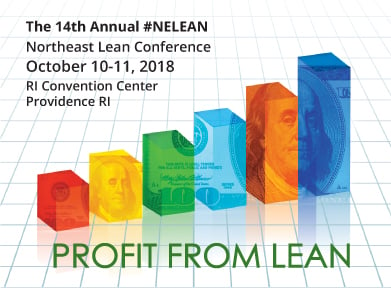A Blog About Understanding The Toyota Production System and Gaining Its Full Benefits, brought to you by "The Toast Guy"

Silver Toaster Spirit
 Bob C. was a front-line employee with twenty-five years experience. His day was spent operating a machine that stripped and terminated leadwire assemblies. Problem was, there were over one thousand different assemblies and it seemed that, while the machine was always busy, it was always behind schedule. Because these wire assemblies were needed for virtually every product his company manufactured, stockouts were a highly visible frustration.
Bob C. was a front-line employee with twenty-five years experience. His day was spent operating a machine that stripped and terminated leadwire assemblies. Problem was, there were over one thousand different assemblies and it seemed that, while the machine was always busy, it was always behind schedule. Because these wire assemblies were needed for virtually every product his company manufactured, stockouts were a highly visible frustration.
Industrial engineers addressed the stockout issue with the purchase of a new high-speed wire machine. The machine performed several operations in a single pass and cut cycle times in half, but it took much longer to set-up than its predecessor. And, because the new machine was very noisy, Bob’s department was moved far away from his internal customers and enclosed in soundproofing foam. As parallel countermeasures to stockouts, production schedulers massaged the sales forecast to bump up planned quantities of popular products, while inventory planners increased safety stock quantities for high-runner wire assemblies. These steps combined to pyramid inventories to record levels; one entire row of high-bay storage in the automatic storage and retrieval system was now dedicated to wire assemblies; but, no improvement to delivery.
These were pre-Lean times with pre-Lean countermeasures, none of which involved Bob C. He was just some guy on the front line, as much an object of change as the lead-wires he made. Then Bob’s company discovered the Toyota Production System, referred to now as Lean. The technical aspects of Lean resonated with Bob immediately: Why not build what his customer’s needed as opposed to some speculative amount based on forecasts and safety stocks? Bob reasoned, “If I build only a week’s supply instead of month’s worth, I won’t even need the high-speed noisy machine; I can use the older machine that has short set-ups.” This was the birth of Kanban at his company, a simple two-bin system. It was a difficult birth.
“He’s not building to MRP,” declared the inventory planners as though it were heresy. Production control, already in hot water with the sales department, echoed concerns of inventory Armageddon. “We’ll go out of business if we do this.” Bob’s plan was scaled back to a proof of concept pilot. With one foot in the pull world and another still in push, Bob persevered: small batches triggered by Kanban made on the old machine and gross overproduction for the remainder produced on the new high-speed machine. Little by little Bob’s concept was borne out; stockouts were nearly eliminated for the pilot parts. After several months, a plan was generated to gradually phase in additional parts.
But Bob wasn’t satisfied. As he reflected on the set-ups steps for his machines, he determined that they could be greatly reduced – almost eliminated. “If we can make a few simple changes to this process, I can build a day’s worth and still keep up. I can produce the low-runner wires pretty much as needed. And, I no longer need the noisy high-speed machine.” By this time, Bob was no longer “some guy on the front line.” He was a change agent and a thought leader. “We can use pull for all of our production.” Bob became our Kanban expert.
Bob C. continued to think about his production. “Why so many wires?” he asked. “Some lengths differ by only a thirty-second of an inch. Who cares?” It turned out that nobody cared. Wire assemblies had been designed in different time periods, and designers had not had good design tools to identify the insignificant differences. Bob saw the opportunity, however, because he was on the front line and was looking for improvement opportunities. I posted a story about variety reduction in 2011 if you’d like to know more about that. In short, however, far fewer lead-wires part numbers were ultimately needed.
Until his retirement, Bob C. continued to develop mastery of his craft and freely shared his learning with everyone around him. In that spirit, GBMP established the “Silver Toaster Award” in 2008 to recognize front-line employees that have demonstrated exceptional leadership and spirit for continuous improvement. The award is presented annually at the Northeast Lean Conference. All nominees receive free admission to the conference, and one of this distinguished group will receive that Silver Toaster.
Is there a front-line employee in your organization with the Silver Toaster Spirit whom you’d like to nominate? There’s still time. Here’s how.
Hope to see on October 10-11 in Providence at the 2018 Northeast LeanConference.
O.L.D.
